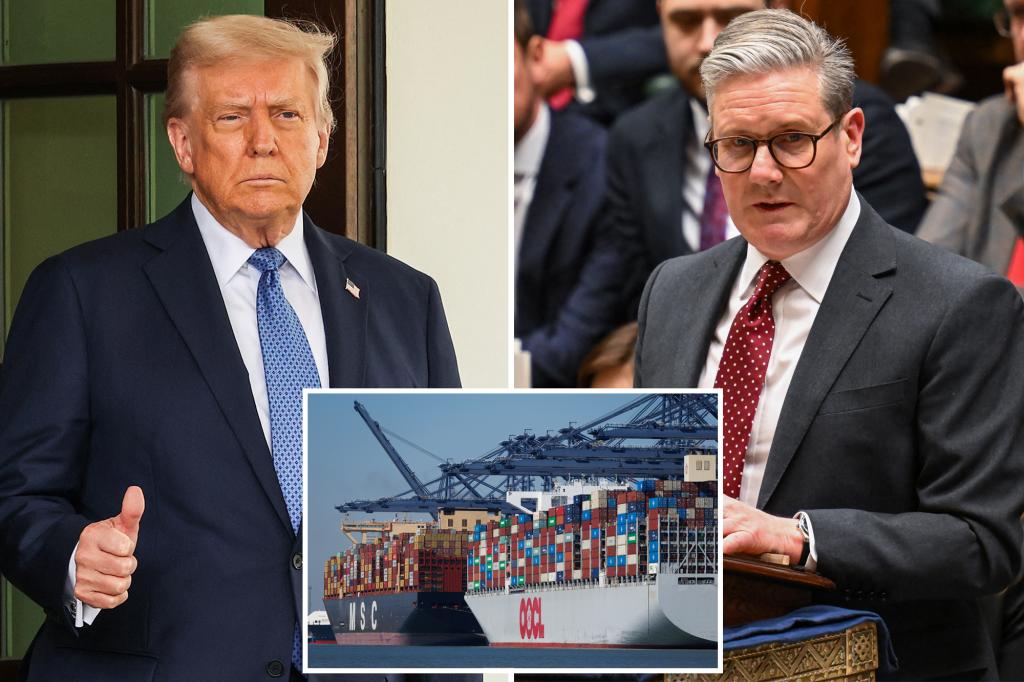Trump Set to Unveil Landmark Trade Deal with Esteemed Britain: Key Details
Former President Donald Trump is poised to announce a groundbreaking trade agreement with the United Kingdom this week, marking a potential turning point in transatlantic economic relations. Scheduled for Thursday at Trump Tower in New York, the deal aims to reduce tariffs, streamline regulations, and boost bilateral trade—projected to increase by $15 billion annually. The agreement comes as both nations seek stronger post-Brexit partnerships and economic revitalization.
What the Trade Deal Entails
Sources familiar with the negotiations reveal the agreement will focus on three key areas:
- Goods tariffs: Elimination of 92% of industrial tariffs and 65% of agricultural duties within five years
- Digital trade: New frameworks for data flows and e-commerce protections
- Financial services: Mutual recognition of professional qualifications and regulatory standards
The deal notably excludes NHS healthcare provisions—a major sticking point in previous UK-EU negotiations. “This creates a template for how America can engage with post-Brexit Britain,” says Dr. Eleanor Whitman, trade policy fellow at the Atlantic Council. “The focus on digital trade is particularly forward-looking compared to traditional agreements.”
Economic Impacts and Opportunities
Analysis from the Peterson Institute suggests the agreement could:
- Add 0.4% to UK GDP and 0.2% to US GDP by 2030
- Create an estimated 75,000 new jobs across both economies
- Reduce consumer prices on key imports like automobiles and whisky
British automakers stand to gain immediate benefits, with the 25% US tariff on light trucks potentially halving within 18 months. Conversely, American tech firms gain improved access to London’s financial hub. “This isn’t just about goods—it’s about securing the Anglo-American special relationship for the digital age,” notes former UK trade minister Liam Fox.
Political Reactions and Controversies
While business leaders largely welcome the deal, political responses reveal stark divisions:
Supportive Perspectives
Proponents argue the agreement demonstrates Brexit’s potential. “This proves Global Britain can strike its own path,” states Jacob Rees-Mogg, echoing sentiments from Conservative backbenchers. US agriculture groups particularly praise provisions allowing greater access for American beef and poultry in UK markets.
Criticisms and Concerns
Opponents warn of potential downsides:
- Labour Party leaders allege the deal undermines UK food standards
- Environmental groups criticize weak climate provisions
- EU officials caution it could complicate UK-EU relations
“The devil will be in the regulatory details,” cautions Dr. Priya Singh of the London School of Economics. “There’s legitimate concern this could lead to a race to the bottom in certain sectors.”
Historical Context and Strategic Timing
The announcement comes 18 months after the UK formally left EU trade structures, and coincides with:
- Britain’s search for non-EU trade partners (only 7% of UK trade currently goes to the US)
- Trump’s potential 2024 presidential campaign positioning
- Ongoing global supply chain realignments
Historians note the agreement revives a 200-year tradition of Anglo-American trade pacts, dating to the 1815 Convention of Commerce. However, modern complexities—from intellectual property to pharmaceutical pricing—create new negotiation challenges.
Implementation Timeline and Next Steps
If finalized, the deal would follow this projected timeline:
- 2023 Q4: Provisional application begins for approved sections
- 2024 Q2: Parliamentary/ Congressional ratification processes
- 2025: Full implementation begins
Observers note the UK’s faster treaty processes could see them ratify before US Congressional approval—a potential flashpoint given Democratic control of the Senate. “The Biden administration may seek modifications,” predicts Brookings Institution trade expert Marcus Johnson. “This could become a 2024 election issue.”
Future Implications and Global Reactions
The deal’s ripple effects may extend beyond bilateral relations:
- CPTPP implications: Could smooth UK accession to the Pacific trade pact
- EU response: May accelerate EU-UK negotiations on remaining issues
- China factor: Strengthens Western economic bloc amid trade tensions
As global trade growth slows to 1.7% in 2023 (WTO projections), the agreement represents a rare bright spot. For businesses, the key will be preparing for new opportunities—from Scotch whisky exporters to Midwest manufacturers. “Companies should start scenario-planning now,” advises PwC trade lead Sarah Chen. “The winners will be those who move fastest to capitalize on changing rules.”
With the official announcement imminent, stakeholders across industries await details that could redefine one of the world’s most consequential economic partnerships. For ongoing coverage and expert analysis of the deal’s specifics, subscribe to our trade policy newsletter.
See more Business Focus Insider Team

